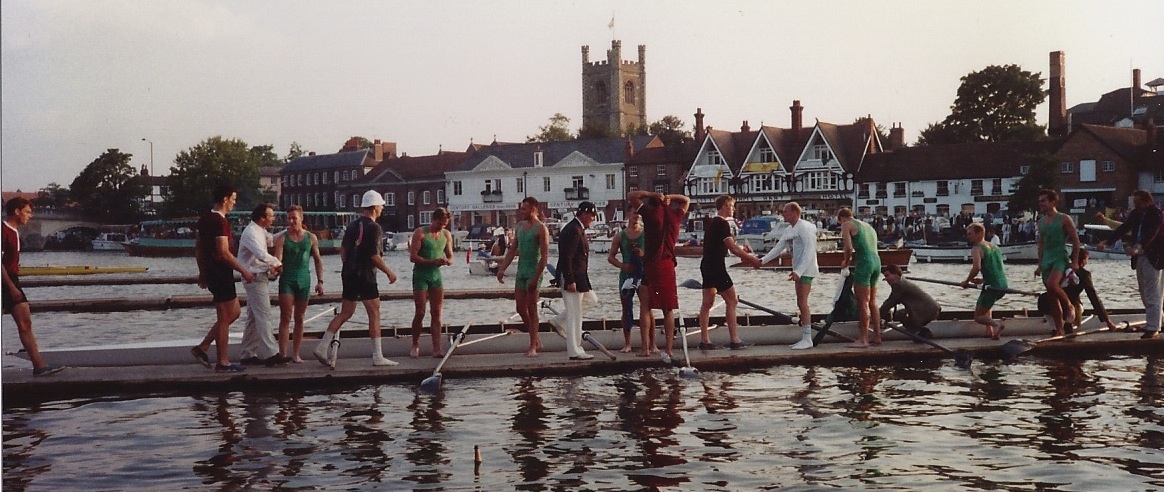Strutt Street, Derby
Aficionados have an intuitive understanding of the fields of play of their favourite sports. Through television, pitch, court and track layouts have become so familiar to the wider public that it’s easy to overlook the fact that some committee in a governing body debated and agreed each detail with a view to aiding the administration of a sport’s laws and ensuring fair play.
Most pitch markings for soccer evolved in the 40 years or so after the founding of the sport’s first governing body, the Football Association, in 1863. The “D” of the penalty area was a relatively late addition in 1937.
Initially codification was dominated by public school and varsity alumni with a little assistance from a members of the expanding professional classes.
In some instances, field of play features we now take for granted can be attributed to specific individuals and places associated with those individuals have become unlikely, and largely unrecognised, Sporting Landmarks. Liverpool’s John Alexander Brodie and his patented goal net is the subject of an earlier post.
Ward’s Soccerpedia, by Andrew Ward, credits Robert J. Smith as the originator of the centre circle. According to Ward, for a period, the centre circle was often referred to as ‘the Smith circle’.
Smith was one of fifteen men who assembled in the Midland Hotel, Derby, on the afternoon of September 22nd, 1883 to establish the Derbyshire County Football Association with the object of staging an annual challenge cup competition for member clubs. Smith became the DCFA’s first secretary. He represented Derbyshire on the F.A. Council from 1883 until 1894.
The centre circle was formally introduced into the laws of football in a review of Law 1 at a meeting of IFAB at the Alexander Hotel, Bath Street, Glasgow on 2nd June 1891. The meeting was hosted by the Scottish F.A. who were represented by W.G. Snedden and A. Sliman; Snedden took the chair and S.F.A. secretary, Mr McDowell, acted as secretary to the meeting. C. Crump and R.P. Gregson represented England; J. Taylor and A.H. Hunter Wales; and J.Reid was the sole representative of the Irish F.A.
The sentence “The centre of the ground shall be indicated by a suitable mark and a circle with a ten yard radius shall be made around it,” was added to the Law 1 description of the field of play. The amendment created a visible manifestation of the ten-yard encroachment distance at the kick-off that was defined in the original 1863 F.A. laws.
The same meeting was also responsible for introducing the penalty kick and abolishing umpires and replacing them with linesmen. (They didn’t officially become assistant referees until 1996.) The referee was also moved from the touchline on to the field of play, and was empowered to give some decisions without waiting for appeals. Prior to 1891, two umpires, usually chosen by the captains, were on the pitch. The referee, chosen by the umpires, adjudicated from the touchline.
Smith had been an umpire at the 1890 F.A. Cup Final between Blackburn Rovers and Sheffield Wednesday at the Kennington Oval on 29 March. On that occasion, his fellow officials were M.P. Betts and Major Marindin.
Morton Peto Betts (1847-1914), an Old Harrovian, had scored the winning goal for the Wanderers in the first F.A. Cup final in 1872. He had played under the assumed name of A.H. Chequer – a tribute to his Harrow Chequers Club: playing for multiple clubs was not uncommon in those early days. Betts went on to play in two of the unofficial international matches between England and Scotland and was selected to play in the first official international on 30 November 1872 but had to withdraw due to injury.
Major Francis Arthur Marindin (1838-1900) was an old Etonian and veteran of the Crimean War. He is credited with having founded the Royal Engineers Football Club and played in the first two F.A. Cup finals, losing in both. He was President of the F.A. from 1874-1890 and refereed the F.A. Cup final eight times. The 1890 final was his seventh successive and last final as referee. (It would be interesting to see how the players might react if the current President of the F.A. were to referee the F.A. Cup Final.)
Smith appears to have been from a humbler background. At the time of the introduction of the centre circle, Robert J. Smith lived in a modest, typically Victorian mid-terraced house, 17 Strutt Street, Derby, according to the 1891 census.
Aged 41, Smith was married to Henrietta, aged 30. The household also included his daughter Charlotte, aged 20, sons Thomas (19), Robert A. (15) and Percy (13) daughter Helen (6) and son Bernard (4).
Robert senior, Thomas and Robert junior were all described as Railway Clerks, Charlotte was a dressmaker and Percy, Helen and Bernard “scholars”.
Strutt Street is less than a mile from Derby railway station and is in an area known as Litchurch in the mid 19th century. The area experienced rapid development during the railway boom. On the same page of the census, the heads of households at numbers 12 and 13 were both railway firemen; an engine driver lived at number 16 and another railway clerk at number 18.
Smith was recorded as having been born in St Pancras, Middlesex, so his career had brought him from London to Derby along the Midland Railway. All five of the children were recorded as having been born in Derbyshire, suggesting he had been there for at least 20 years.
The 1881 census sheds light on puzzling age difference of just ten years between Smith’s wife and eldest daughter. In the previous 1881 census, Smith was listed as a widower living at 29 Madeley Street, which is parallel to Strutt Street. Henrietta M. Lineham, his niece, then aged 20 and originally from Islington, was a member of the household and described as a housekeeper.
Smith’s selection as a match official for the 1890 Cup Final possibly says something about how the administration of football was beginning to change as the sport tried to get to grips with professionalism and a more structured calendar following the founding of the Football League in 1888. The hosting of the first F.A. Cup final outside London – the replay of the 1886 final between Blackburn Rovers and West Brom – suggests the Derbyshire county association and Smith were well regarded within the F.A.
Smith had also officiated in earlier rounds, including the saga of the quarter final between Notts County and Sheffield Wednesday.
The first match, on February 15 was won 5-0 by Wednesday. However, “the ground, by incessant snow and rain during the day of the match, was rendered so unfavourable that a protest by Notts was sustained.” On the following Saturday, 22 February, the match was replayed with County winning 3-2.
It was at this point that Wednesday raised objections about three County players for alleged contraventions of Rule 32 which barred from the following season’s F.A. Cup “any club or player taking part in a football contest other than charity cup ties or practice matches between teams of the same club, without the written consent of the Secretary of the Football Association, from the first day of June to the first day of September.” Calderhead had played for Rangers against Cowlairs on 17 July while the brothers James and John Oswald had played for Glasgow against Celtic on August 9.
An F.A. Commission, which met at Derby’s Midland Hotel on Wednesday 26 February, decreed the match should be replayed on a neutral ground in Derby and the match was fixed for Monday 3 March. Smith was nominated as one of the umpires while N.L. Jackson of London, who had also sat on the commission, was named as referee.
Wednesday won the match 2-1. Notwithstanding a challenge from County about the eligibility of three Wednesday players, which was subsequently rejected at a second F.A. hearing, Wednesday went on to reach the final at the Oval where they were comprehensively beaten 6-0 by Blackburn Rovers.
Smith was also named as an umpire for semi-final between Blackburn Rovers and Wolverhampton Wanderers played in Derby.



